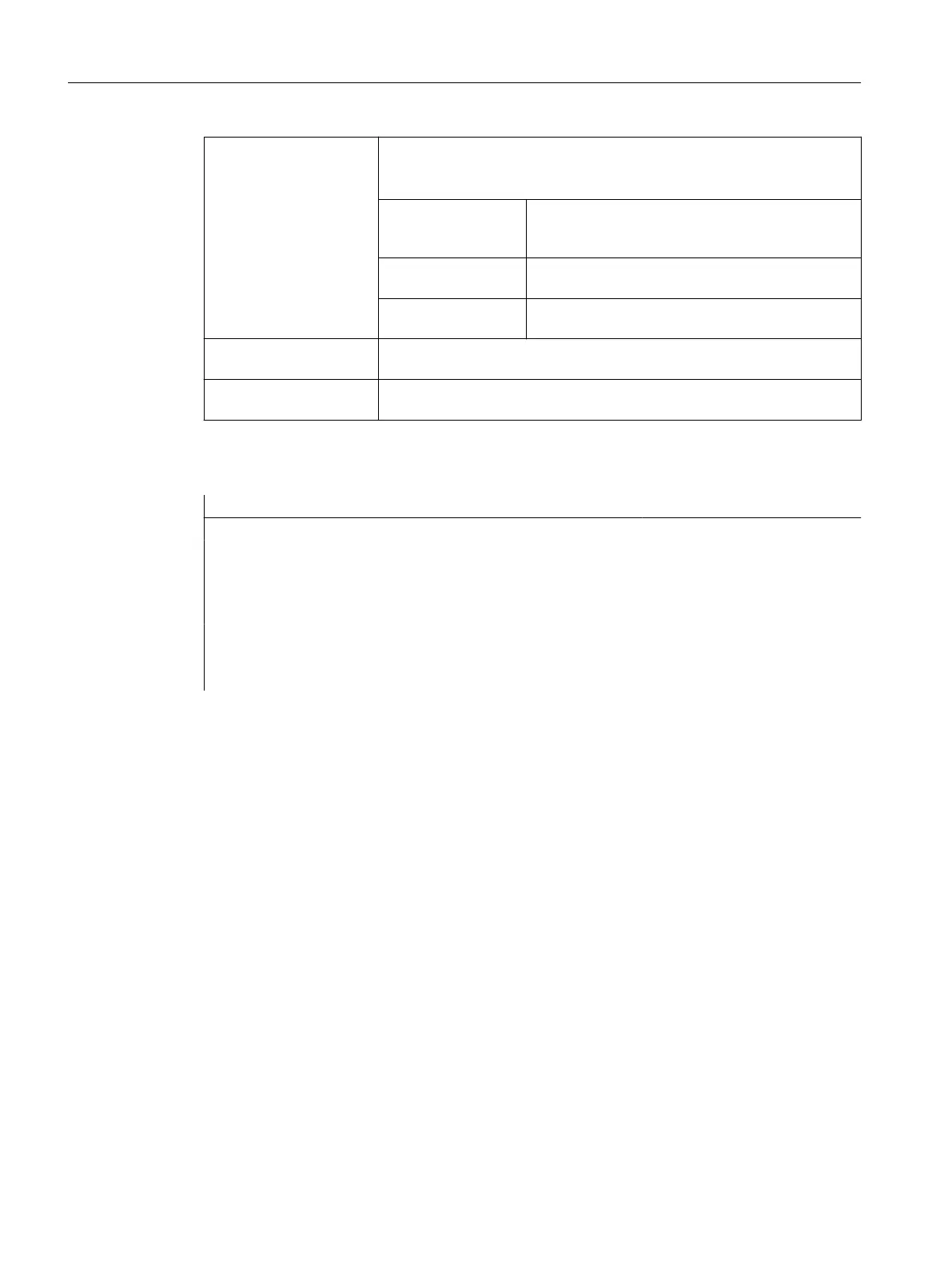<jump target_1>: A branch is made to this jump target if the value of the variable or arithmetic
function corresponds to the first specific constant.
The jump target can be specified as follows:
<jump marker>: Jump target is the jump marker (label) set in the
program with a user-defined name: <jump
marker>:
<block number>: Jump target is main block or sub-block number
(e.g.: 200, N300)
STRING type varia‐
ble:
Variable jump target. The variable stands for a jump
marker or a block number.
<jump target_2>: A branch is made to this jump target if the value of the variable or arithmetic
function corresponds to the second specified constant.
<jump target_n>: A branch is made to this jump target if the value of the variable does not
assume the specified constant value.
Example
Program code
...
N20 DEF INT VAR1 VAR2 VAR3
N30 CASE(VAR1+VAR2-VAR3) OF 7 GOTOF Label_1 9 GOTOF La-
bel_2 DEFAULT GOTOF Label_3
N40 Label_1: G0 X1 Y1
N50 Label_2: G0 X2 Y2
N60 Label_3: G0 X3 Y3
...
The CASE statement from N30 defines the following program branch possibilities:
1. If the value of the arithmetic function VAR1+VAR2-VAR3 = 7, then jump to the block with the
jump marker definition "Label_1" (→ N40).
2. If the value of the arithmetic function VAR1+VAR2-VAR3 = 9, then jump to the block with the
jump marker definition "Label_2" (→ N50).
3. If the value of the arithmetic function VAR1+VAR2-VAR3 is neither 7 nor 9, then jump to the
block with the jump marker definition "Label_3" (→ N60).
3.1.6 Repeat program section (REPEAT, REPEATB, ENDLABEL, P)
Program section repetition allows you to repeat existing program sections within a program in
any order.
Work preparation
3.1 Flexible NC programming
NC programming
468 Programming Manual, 12/2019, 6FC5398-2EP40-0BA0

